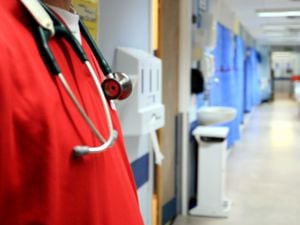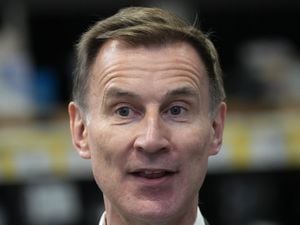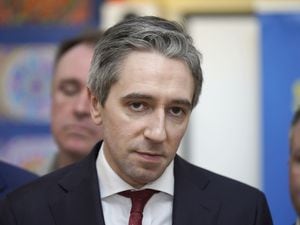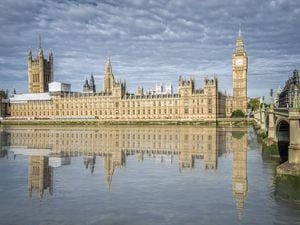Number of pupils and staff absent from England’s schools rises after Christmas
Around one in 12 teachers and school leaders were not in work at the start of term, figures show.
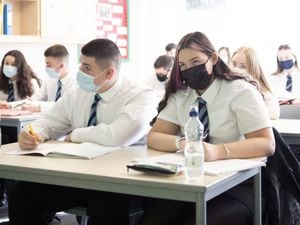
The number of pupils and teachers out of school for Covid-related reasons in England has risen as Omicron cases spread, Government figures show.
The Department for Education (DfE) estimates that 3.9% of all pupils – around 315,000 children – were not in class for reasons connected to coronavirus on January 6 – which is a record high for this school year.
This was up from approximately 301,000 children, or 3.7% of all pupils, on December 16, just before the Christmas holidays.
The latest data shows 8.6% of teachers and school leaders – around 44,000 of staff – were absent at the start of term, up from 8.0% on December 16.
Meanwhile, some 4.9% of teachers and school leaders were off school due to Covid-related reasons on January 6, up from 3.0% on December 16.
Among pupils absent for Covid-19 reasons, the main reason was a confirmed case of coronavirus, with around 159,000 pupils (2.0%) off for this reason, compared to approximately 111,000 pupils before Christmas.
The figures come amid reports that schools are increasingly using online lessons for absent pupils and to help cover teacher absences.
Paul Whiteman, general secretary of school leaders’ union NAHT, has warned that significant staff shortages will have a “significant impact on education”.
He said: “Schools are doing a brilliant job to keep things going in the face of very challenging circumstances, but it is very far from business as usual. And the concern is that the situation could worsen over the coming weeks.
“Some of our members have told us that they are already experiencing teaching staff absences of more than 20%, and the Government itself is planning for 25% staff absence rates.
“While schools will do everything they can to manage the situation, there is a reality that needs to be acknowledged here too.
“There is no escaping the fact that if a school has a quarter of its workforce off, that will have a significant impact on education.”
Geoff Barton, general secretary of the Association of School and College Leaders (ASCL), said: “The challenges posed by having so many staff absent will continue to put schools and colleges under severe pressure.
“The costs of bringing in the supply staff needed to maintain learning is crippling for schools and colleges and the Government needs to step in to help, as well as providing more support on ventilation.”
The data reveals that 8.9% of teaching assistants and other staff – around 62,000 – were also absent on January 6, up from 7.3% on December 16.
Some 5.0% of teaching assistants and other staff were off school for Covid-related reasons on January 6, up from 2.3% on December 16.
Natalie Perera, chief executive of the Education Policy Institute (EPI) think tank, said: “Teacher absences have increased significantly, while a very large proportion of support staff are now also absent.
“The acute staff shortages seen in schools are likely to persist for some time due to the high level of infection in the general population.”
She added: “Our research has shown an association between pupil absence and higher learning losses, so the high rate of pupils out of school seen today continues to be a concern.
“The Government must closely follow pupil absences this term and consider whether additional financial support to help pupils avoid further learning losses is needed.”
Education Secretary Nadhim Zahawi has said there is no doubt staff absence levels will rise in schools as pupils return to the classroom, as he warned the next two weeks will be “bumpy”.
Mr Zahawi said he was making contingency plans for rising rates of staff being off, saying some schools have had up to 40% of staff absent.
Last month, he called on former teachers to return to the classroom to tackle staff shortages.
The total number of former teachers who have returned to teaching this month following the Government’s recruitment campaign remains unclear.
Shadow education secretary Bridget Phillipson said: “Schools are facing a renewed wave of Covid chaos with staff and pupil absences rising sharply.
“Yet the Government is still dragging its feet on the action needed to keep kids learning.”
She added: “Ministers must now step up to secure our children’s learning and their futures, with a serious plan to tackle workforce absences and ventilate schools to keep children learning together in class.”
A DfE spokeswoman said: “School staff are working tirelessly to ensure classrooms are safe, and it is thanks to their efforts that 99.9% of schools are open once again and millions of pupils have returned to face-to-face learning after the Christmas break.
“We are supporting schools through encouraging former teachers to come back to classrooms and extending the Covid workforce fund for schools that are facing the greatest staffing and funding pressures.”
New rules on asymptomatic people in England not needing a follow-up PCR test if they have a positive lateral flow test come into force on Tuesday.
An expert has said that the UK is the closest of any country in the northern hemisphere to exiting the pandemic.
Professor David Heymann, from the London School of Hygiene and Tropical Medicine (LSHTM), suggested in a Chatham House online briefing that the UK was seeing the disease become endemic.
But global health leaders have said more than half of people across Europe will be infected by the Omicron variant over the next six to eight weeks.
The European arm of the World Health Organisation (WHO) has warned it is “still a way off” to calling Covid-19 “endemic”.
The latest figures from the Office for National Statistics (ONS) show that more than 175,000 people in the UK have had Covid-19 recorded on their death certificate since the pandemic began.

